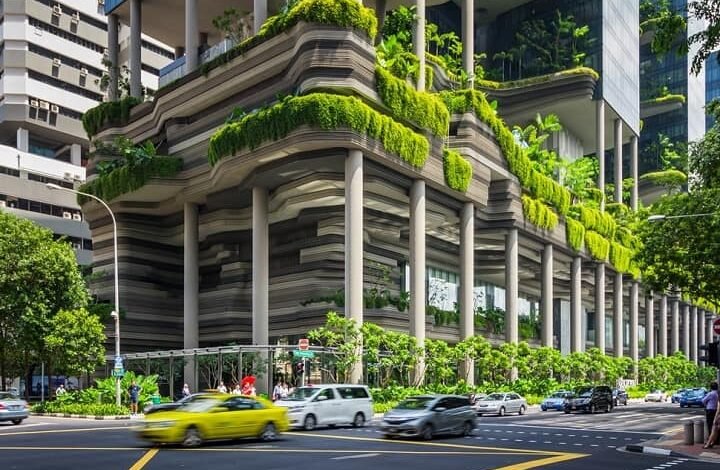The Role of Sustainable Materials in Building Greener Cities

Introduction
Cities are the beating heart of modern civilization. They are hubs of commerce, culture, technology, and opportunity. Yet, they are also the largest contributors to climate change. According to the United Nations, cities consume over 70% of the world’s energy and generate more than 60% of greenhouse gas emissions. With rapid urbanization—over 68% of the world’s population is expected to live in cities by 2050—the sustainability of urban areas is one of the most pressing challenges of our time.
The solution lies in innovation, particularly in sustainable materials. From eco-friendly construction supplies to biodegradable polymers, these materials are not only helping reduce carbon footprints but also enabling cities to evolve into climate-resilient, livable ecosystems. Among these innovations, polyvinyl alcohol (PVA) stands out for its applications in construction, coatings, packaging, and water management, with leaders like Kuraray Poval driving adoption.
This article explores how sustainable materials are transforming modern cities, the challenges in adoption, and the future of greener urban living.
1. The Urban Sustainability Challenge
Urban centers are under immense pressure:
- Carbon Emissions: Cities contribute the majority of CO₂ emissions.
- Waste Management: Billions of tons of solid waste generated annually.
- Resource Consumption: Concrete, steel, and plastic dominate construction.
- Climate Vulnerability: Urban areas face heatwaves, floods, and pollution crises.
Sustainability is not just an ethical choice—it’s a necessity for survival.
2. Green Construction Materials
Construction is one of the largest polluting industries. Traditional materials like cement and steel have massive carbon footprints. Green alternatives are transforming the sector:
- Recycled Steel: Reduces reliance on energy-intensive virgin steel.
- Bamboo: Strong, renewable, and low-carbon alternative for beams and flooring.
- Green Concrete: Incorporates industrial waste (fly ash, slag) to reduce emissions.
- Polymers in Construction: PVA fibers mixed into concrete improve tensile strength, reduce cracking, and extend building lifespans.
By integrating advanced polymers into urban construction, cities can lower costs and enhance durability while meeting climate goals.
See also: Affordable Dog Beds for Sale Style and Comfort
3. Sustainable Infrastructure
Infrastructure—roads, bridges, and transport—dictates how sustainable a city truly is.
- Eco-Friendly Roads: Made with recycled asphalt and plastic waste.
- Bridges Reinforced with Polymers: Longer-lasting and resistant to corrosion.
- Transit Systems: Lightweight composites in trains and buses reduce energy use.
Smart cities now integrate these sustainable materials into planning, ensuring infrastructure supports environmental as well as social goals.
4. Public Spaces & Urban Design
Green public spaces improve mental health, lower pollution, and cool cities. Sustainable materials ensure they are eco-friendly too.
- Benches & Walkways: Built from recycled wood-plastic composites.
- Playgrounds: Equipment made from safe, biodegradable plastics.
- Lighting: Solar-powered, energy-efficient LED systems.
Urban design with sustainable materials creates healthier, safer, and longer-lasting public environments.
5. Waste Management & Recycling Systems
Cities generate 2 billion tons of waste annually, and this number is rising. Sustainable materials help tackle this challenge:
- Biodegradable Polymers: Replace single-use plastics in packaging.
- Closed-Loop Recycling: Cities recycle polymers into new building materials.
- Composting Systems: Bioplastics designed to degrade alongside food waste.
This reduces landfill waste while creating economic opportunities in recycling industries.
6. Energy Efficiency in Urban Buildings
Buildings account for 40% of global energy consumption. Sustainable materials reduce this significantly:
- Insulating Polymers: PVA-based coatings improve thermal efficiency.
- Green Roofs & Walls: Natural insulation plus air purification.
- Smart Windows: Polymers allow glass to adjust transparency based on sunlight.
Net-zero skyscrapers are becoming a reality, proving that even dense cities can minimize energy use.
7. Water Conservation & Flood Control
Cities are vulnerable to both water scarcity and flooding. Materials innovation is critical:
- Polymer-Based Barriers: Protect against urban floods.
- Water-Saving Plumbing Materials: Reduce leaks and wastage.
- PVA Applications: Water-soluble polymers aid in water treatment and recycling processes.
Smart water systems powered by sustainable materials ensure resilience against climate extremes.
8. Urban Transport Innovations
Transport accounts for nearly 25% of urban emissions. Sustainable materials are revolutionizing mobility:
- Lightweight Composites: Used in electric vehicles and buses to reduce energy use.
- Polymer-Enhanced Bike Lanes: Durable and weather-resistant.
- Shared Mobility Systems: Bikes, scooters, and EV fleets designed with recycled materials.
By integrating these innovations, cities reduce emissions while promoting healthier lifestyles.
9. Challenges of Greener Cities
Despite progress, hurdles remain:
- High Costs: Green materials often cost more upfront.
- Policy Gaps: Inconsistent regulations slow adoption.
- Greenwashing: Cities and developers exaggerating sustainability claims.
- Public Awareness: Citizens may resist lifestyle changes.
Overcoming these requires government incentives, corporate responsibility, and citizen engagement.
10. Future of Sustainable Cities
The future of cities is smart, green, and resilient. Expect to see:
- AI-Driven Materials Design: Creating stronger, lighter, more sustainable materials.
- Circular Economy Urban Models: Materials designed for reuse and recycling.
- Carbon-Neutral Infrastructure: Entire districts powered by renewables and built with eco-materials.
- Urban Ecosystems: Cities designed to mimic natural cycles, from energy to waste.
By 2040, experts predict most major global cities will be built on sustainable material foundations.
Conclusion
Cities are the engines of human progress, but they are also hotspots of environmental degradation. The only path forward is sustainability, and sustainable materials are at the core of that transformation. From PVA-reinforced concrete in skyscrapers to biodegradable plastics in packaging, innovation is ensuring that urban living becomes greener, smarter, and more resilient.
The future of cities depends on the choices we make today. By embracing materials that balance performance with eco-responsibility, we can build urban centers that thrive without destroying the planet.
FAQs
1. Why are cities focusing on sustainable materials?
Because urban centers generate the majority of emissions and waste, making them critical to climate action.
2. What role does PVA play in greener cities?
PVA strengthens concrete, enhances coatings, and aids in water treatment, making it vital for sustainable urban infrastructure.
3. What are examples of green construction materials?
Recycled steel, bamboo, green concrete, and eco-friendly polymers.
4. How do sustainable materials improve energy efficiency?
Polymers in insulation and smart coatings reduce heating and cooling needs.
5. Can sustainable materials reduce urban flooding?
Yes, polymer-based barriers and smart water systems help control floods.
6. What are the biggest challenges for greener cities?
High costs, lack of policies, greenwashing, and public resistance.
7. What is a circular economy in cities?
A model where materials are reused and recycled continuously to eliminate waste.
8. What is the long-term outlook for sustainable cities?
By 2040, most major cities will integrate carbon-neutral infrastructure built on sustainable materials.




